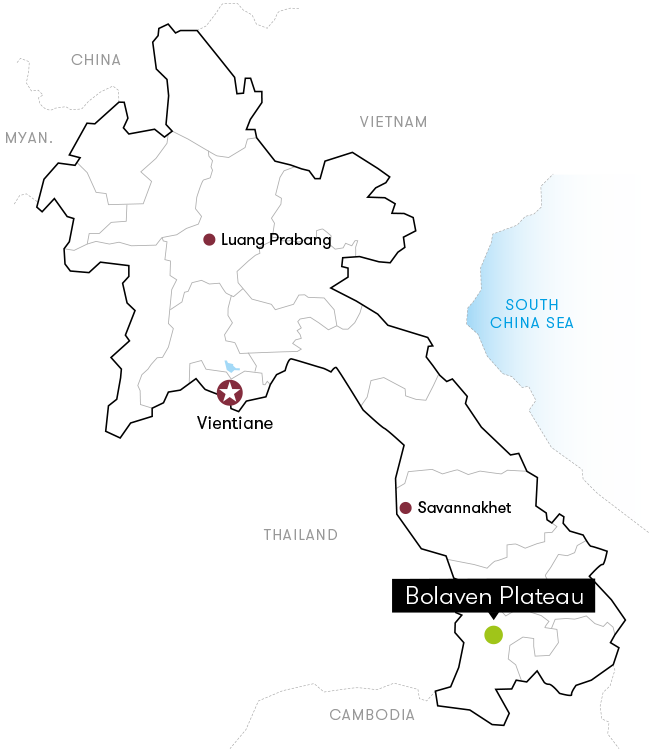Laos Phetlamka Estate Gesha T Natural (2022)
| Bag Weight | 60 KG BAG |
|---|---|
| Harvest Season | 2020/21 |
| Status | Spot |
| Lot Number | P8001511-2 |
About This Coffee


The Region
The Bolavens Plateau in South Laos is the most favourable region for coffee cultivation in the country. The region boasts high elevations (up to 1,350masl), rich volcanic soils, and a moderate climate with plentiful sunshine, rainfall and a low risk of frost. The gentle slopes of the plateau negate many of the farming challenges posed by more mountainous and varied terrain.
The economy in Laos is overwhelmingly dominated by agriculture, accounting for around 25% of GDP and 73% of the labour force. With 22% of the population also living below the poverty line, there is a continuing need for sustainable agricultural supply chains to which the specialty coffee industry can positively contribute.
The Process
Strictly ripe cherries are harvested and are first washed with clean water to remove foreign matter and then fed into a floater separator machine to remove floater cherries. Cherries are then sundried in a greenhouse on raised African beds for 15-20 days.


History of Coffee in Laos
Inside Laos' 92,000 square miles there are 160 ethnic sub-groups and 82 distinct living languages (counts do vary). Administratively, politically, geographically, there is a Laos. But functionally, at the level of people living on and off the land, Laos is a collection of distinct communities. For example, at the beginning of the 20th century, the Yahern people (also: Nyaheun) came down from the Annamite mountains, which define the eastern edge of Bolaven Plateau and the border with Vietnam, to discover they were citizens of something called the Kingdom of Champasak, in what is now the Paksong District and the “coffee capital” of Laos. They were granted land by the royal family and for 120 years they farmed this land, including coffee, which was introduced to northern Laos by the French in 1915. Coffee production moved to the Plateau, where the altitude and climate are ideal, in the 1920’s.
Until the 1970’s, the Yahern, Talieng, Alak, Lawae, La Ngae, Katoo, Laven, and other peoples practiced shifting cultivation, allowing land to recover and cultivating new areas. Unfortunately, this often meant “slash and burn,” destroying forest to create fresh agricultural land. In 1977, the government began to encourage settled farming, through a combination of subsistence and cash crops, including coffee. It took a generation, but farmers on the Plateau adapted to permanent agriculture. Traditional farming practices did not vanish completely, but much of the “slash and burn” was replaced by planting commercial growths like teak and rosewood, and forests were gleaned for commercial products, like bark for incense and pampas grass for making brooms. Over the last two decades, the government has promoted the transition from Robusta, which was planted in the 1950’s in response to diseases like rust, to Arabica. Over the last 10 years, quality coffee on the Bolaven Plateau has come to mean more than a change from Robusta to Arabica. With each passing season, more and more farmers learn about the agronomic and milling practices that produce superior quality worthy of the specialty market.
- Subregion Bolovens Plateau
- Farm Name Phetlamaka Estate
- Producer Type Single Estate
- Processing Natural/Dry Processed
- Plant Species Arabica
- Variety Gesha
- Screen Size 15 Up
- Soil Volcanic
- On Sale Yes
- Top Lot Yes
- Price Per Kg £6.95
- Status Spot
- Coffee Grade LAO CA NAT PR G1
- CTRM Contract Number P8001511-2
- Origin Laos
- Warehouse Vollers Group Uk





